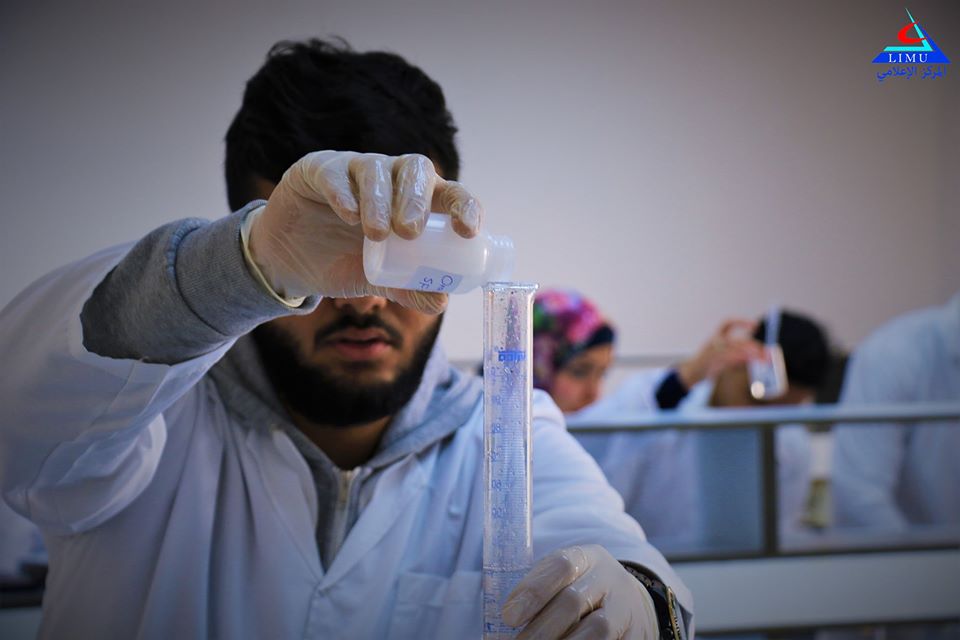[ Faculty Of Pharmacy ]
Facilities

Handling Chemicals
Chemicals that you will use in the lab can exist in many forms: Dust, fumes, fibers, powders, liquids, gases, vapors.
Any chemical that has a potential to cause harmful effects is referred to a hazardous or dangerous chemical. These chemicals include any chemicals:
Brought directly to be used in experiments such as solvents, or cleaning agents.
Generated by a process or work activity.
Generated as a waste or residue.
The hazardous effect that the chemicals can cause may appear directly after the contact, such as: chemical burns, or after many years of exposure. In both cases, protection is needed. In addition to that, chemicals do not all have the same hazardous effects which they can be identified through their labels. Table 1 (Appendix I) shows the most famous symbols of hazardous materials. Therefore, several steps must be emphasized to avoid any accidents:
Protection is always needed.
Never use chemical for anything other than the authorized purpose. For example: use of gasoline to wipe equipment.
Always check with the teacher on the type of chemicals involved in your work, uses and their harmful effects.
Never mix chemicals that are not listed in your experiment.
Always check the labels of materials before using them.
